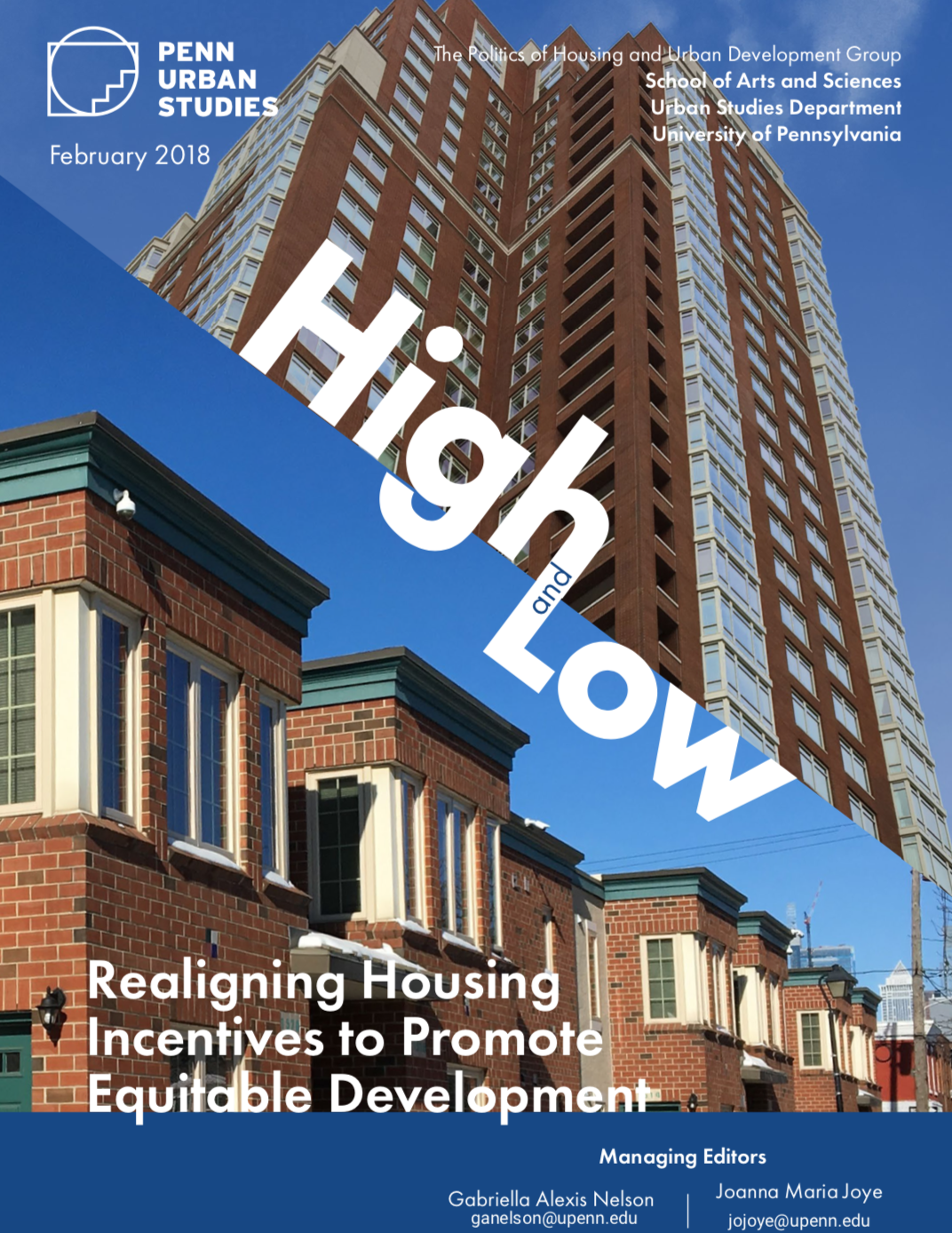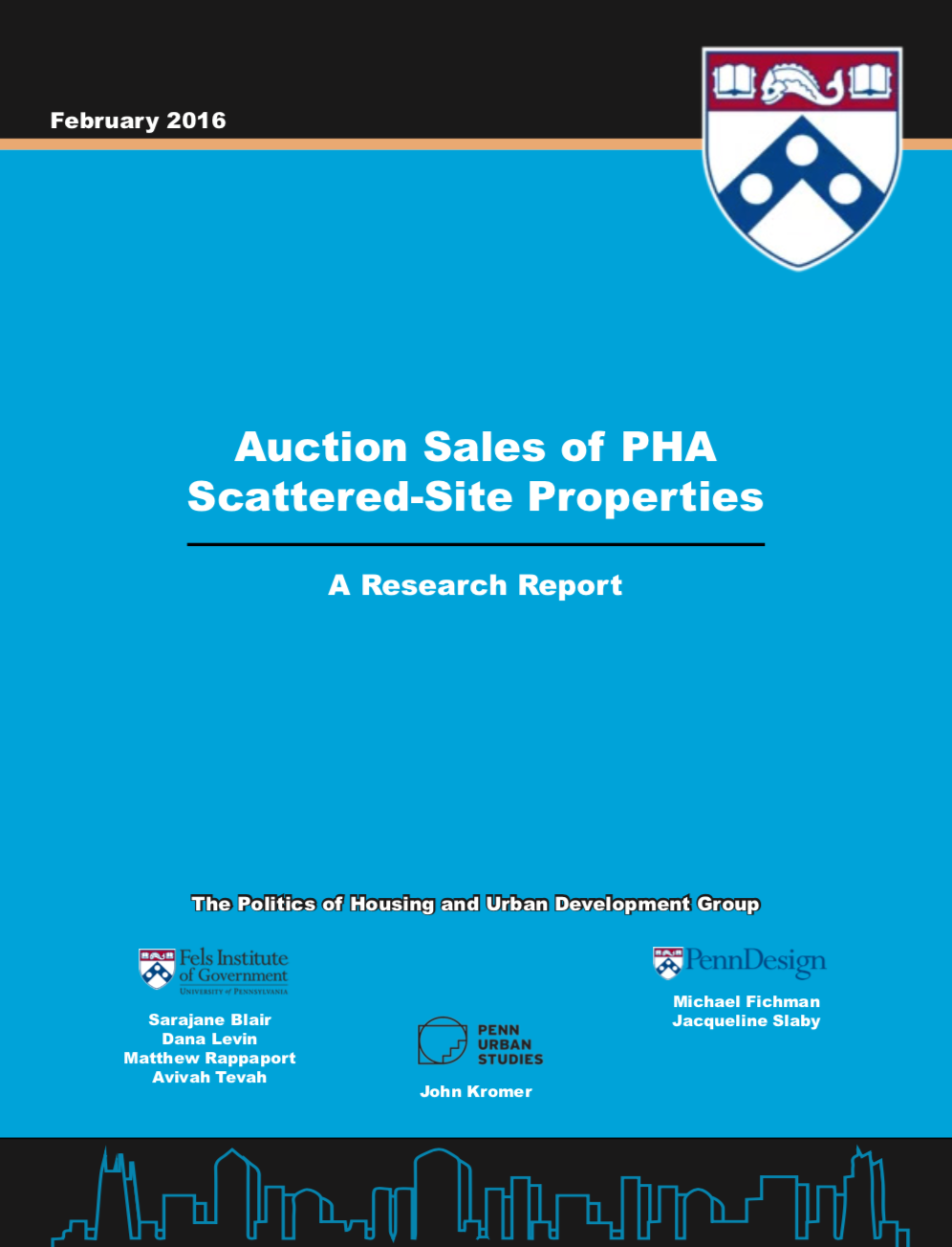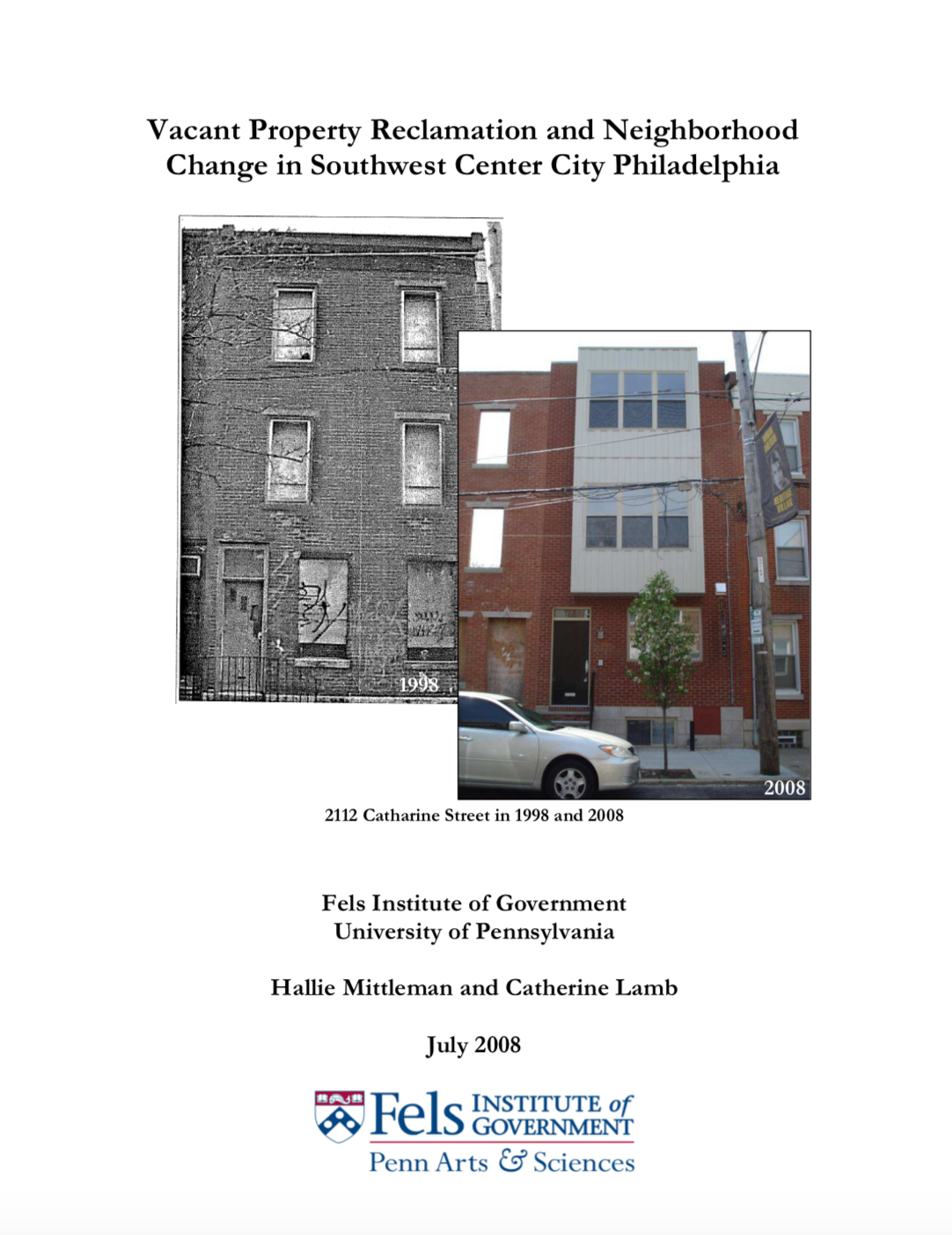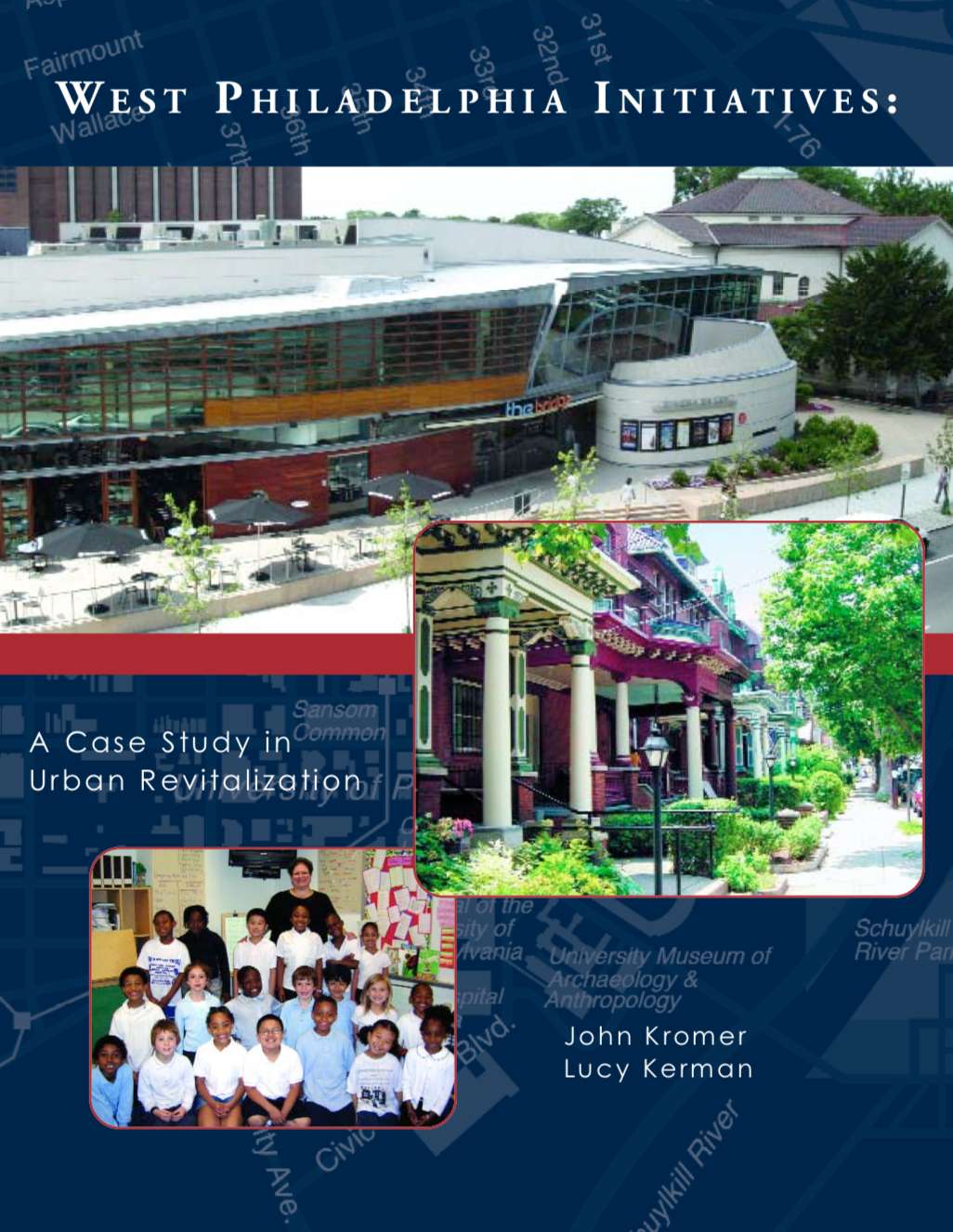High and Low:
Realigning Housing Incentives to Promote Equitable Development (2018)
This report, completed in coordination with students in my “Politics of Housing and Urban Development” course at the University of Pennsylvania, contains an analysis of data on housing development ventures supported by the City of Philadelphia’s ten-year tax abatement over a twelve-year period, as well as a description of potential opportunities to support continued wealth-building in Philadelphia’s housing markets while simultaneously generating new resources for affordable housing development and preservation.
Auction Sales
of PHA Scattered-Site Properties (2016)
What happened to the nearly 500 vacant houses and lots owned by the Philadelphia Housing Authority (PHA) that were sold to high bidders at a public auction in 2011?
In order to answer this question and evaluate the potential effectiveness of auction sales as a strategy for promoting the rehabilitation of vacant properties, a group of Penn students and I visited all of the properties four years later and compiled information on the ownership, occupancy status, condition, and tax payment status of each of them.
Our group found that the auction sales produced substantial new revenue for PHA, helped stimulate investment in formerly vacant houses and lots, and generated new tax ratables for the City of Philadelphia, among other outcomes.
Because these auctions were the first in which large numbers of public agency-owned vacant properties were sold in this manner, the research findings may provide a useful model for other agencies that are undertaking vacant property disposition activities in Philadelphia and elsewhere.
Vacant Property Reclamation
and Neighborhood Change
in Southwest Center City Philadelphia (2008)
In 2008, under the sponsorship of Penn’s Fels Institute of Government, with funding support provided by the William Penn Foundation, two Masters of Public Administration students and I produced a detailed update of an inventory of 553 vacant houses, nearly all of them privately owned, that had been conducted by City of Philadelphia staff ten years previously. Because all of the properties were located in a neighborhood adjacent to Philadelphia’s central business district, where a high level of reinvestment activity had recently taken place within the past decade, we expected that the project would provide new insights about neighborhood change, based on our review of a large sample of properties located in what had been a high-vacancy area at the time of the city inventory.
We found that most of the properties had been rehabilitated and were occupied or were undergoing rehabilitation. Most of this development activity had been undertaken on a property-by-property basis by small developers and contractors, in most cases without the benefit of cash subsidies from the city. The report provides maps illustrating patterns of investment, before-and-after photos of representative properties, and information about factors that are likely to have influenced reinvestment in these properties.
West Philadelphia Initiatives:
A Case Study in Urban Revitalization
(2004)
This report, co-authored with Lucy Kerman and published with funding support from the Annie E. Casey Foundation, describes how the University of Pennsylvania organized and implemented an ambitious policy designed to stimulate reinvestment in West Philadelphia communities.
The goal of Penn’s policy was to fundamentally improve the West Philadelphia neighborhood economy through a major commitment of University leadership, administrative support, funding, and academic resources, sustained over a period of years.
University initiatives were designed to address five broad areas of interest and concern.
- Clean, safe, and attractive streets and neighborhoods;
- Excellent school options;
- High quality, diverse housing choices;
- Reinvigorated retail options; and
- Increased job opportunities through economic inclusion.
We hope that West Philadelphia Initiatives: A Case Study in Urban Revitalization will help city-based institutions, as well as government, business, and community supporters of these institutions, make informed decisions about the best use of available resources effectively to stabilize and strengthen the economy of the neighborhoods where they are located.



